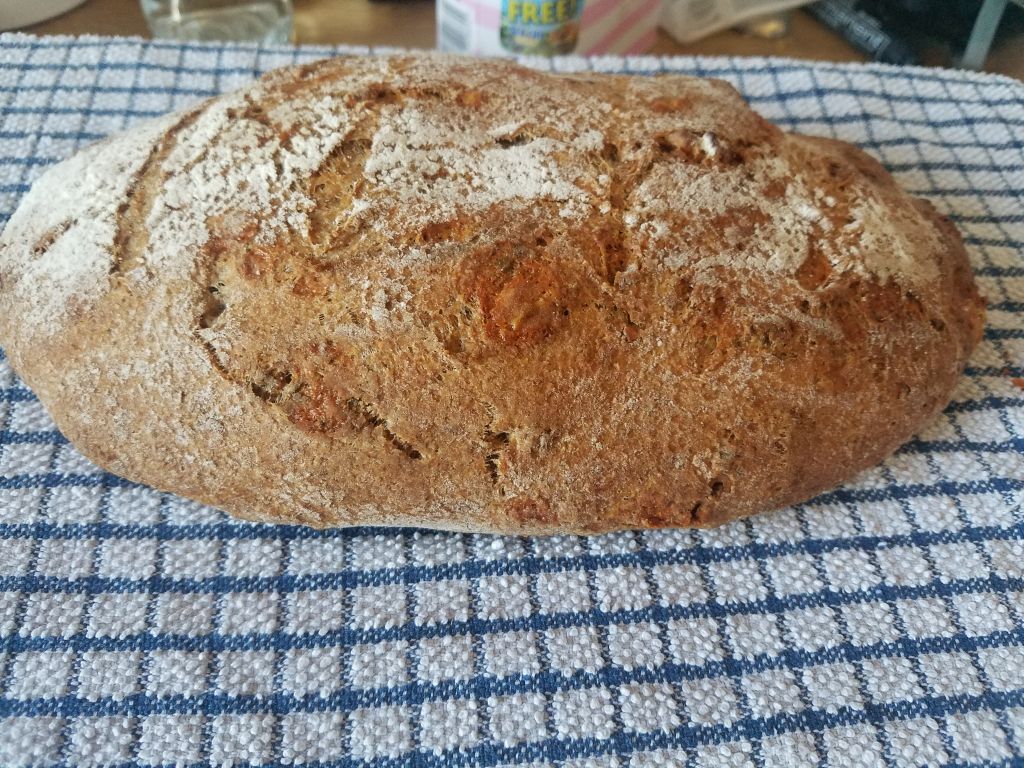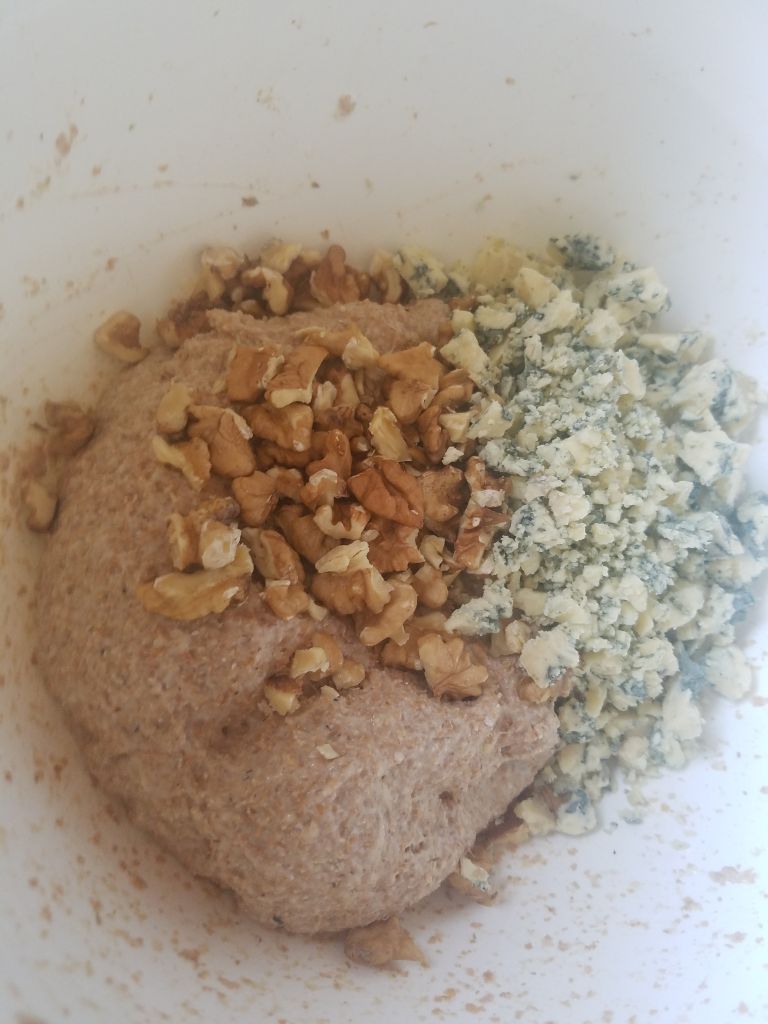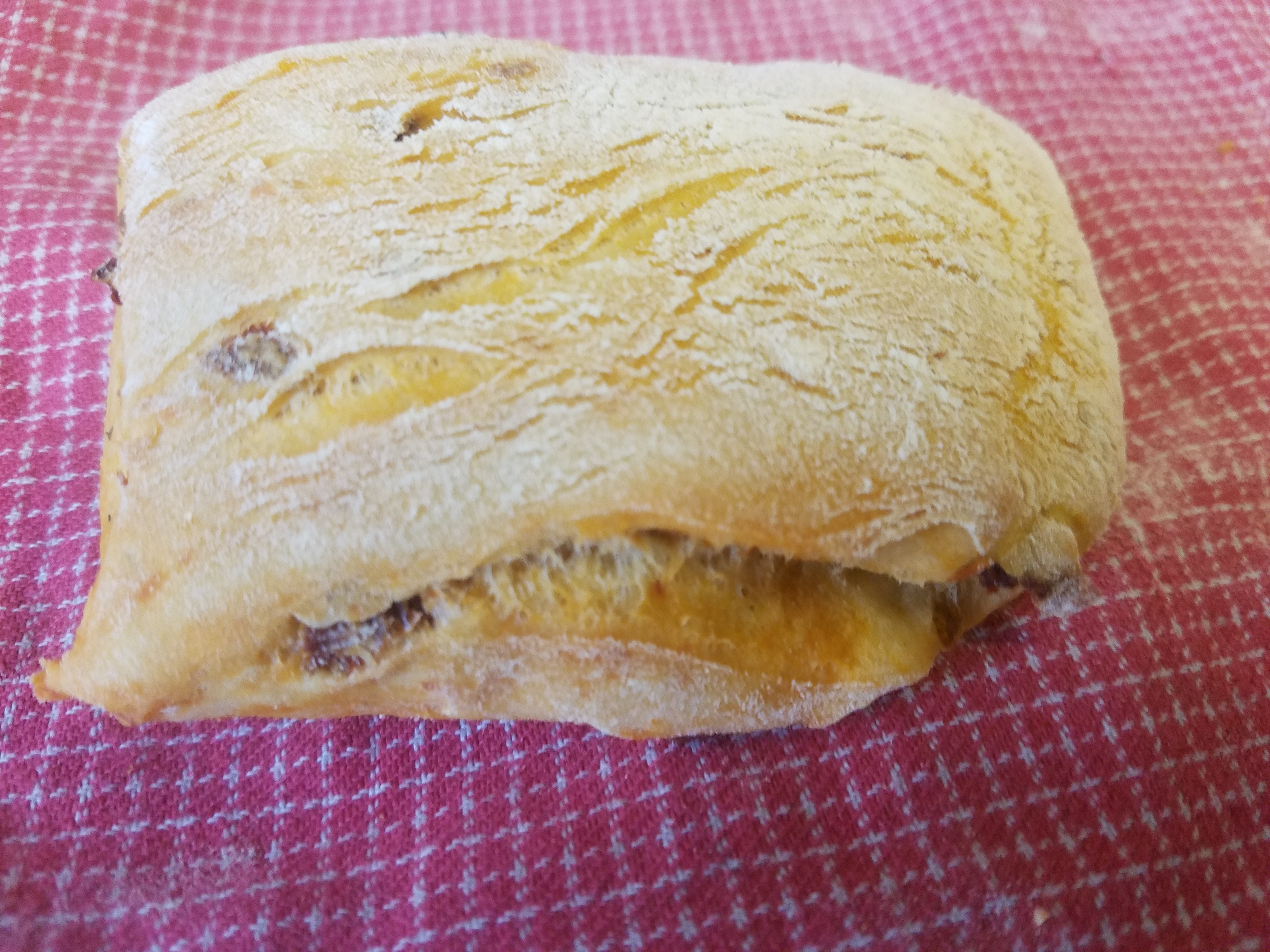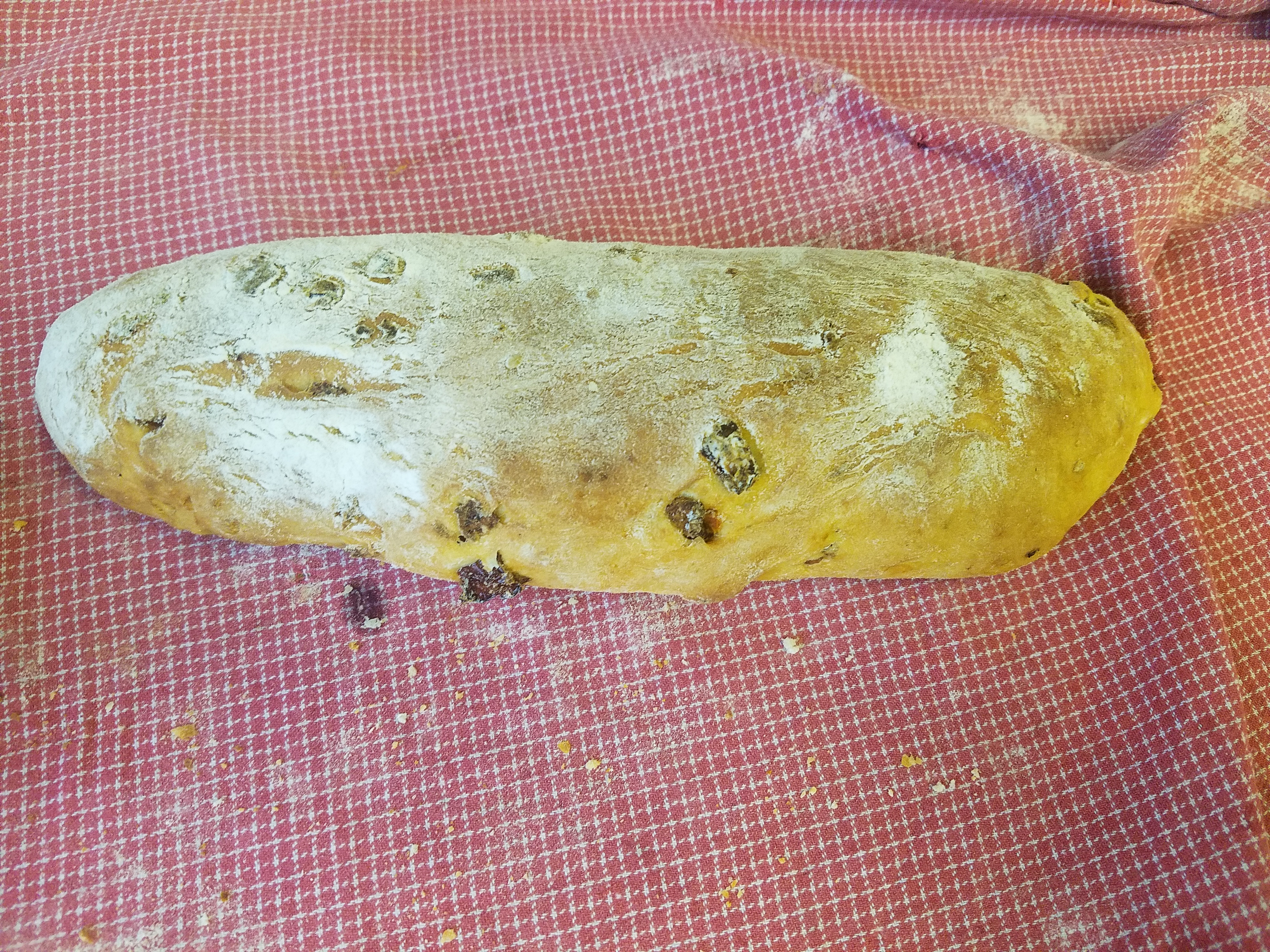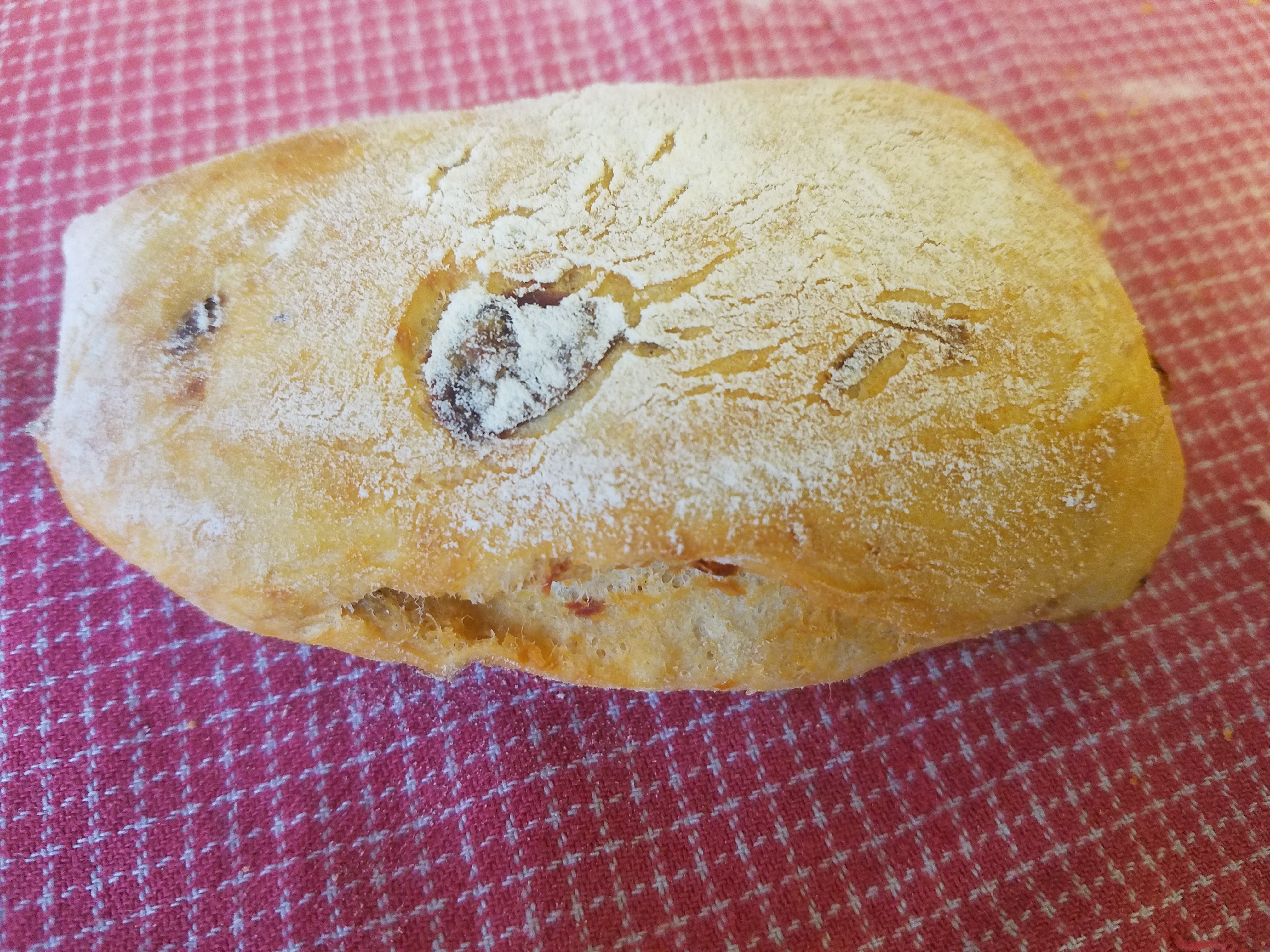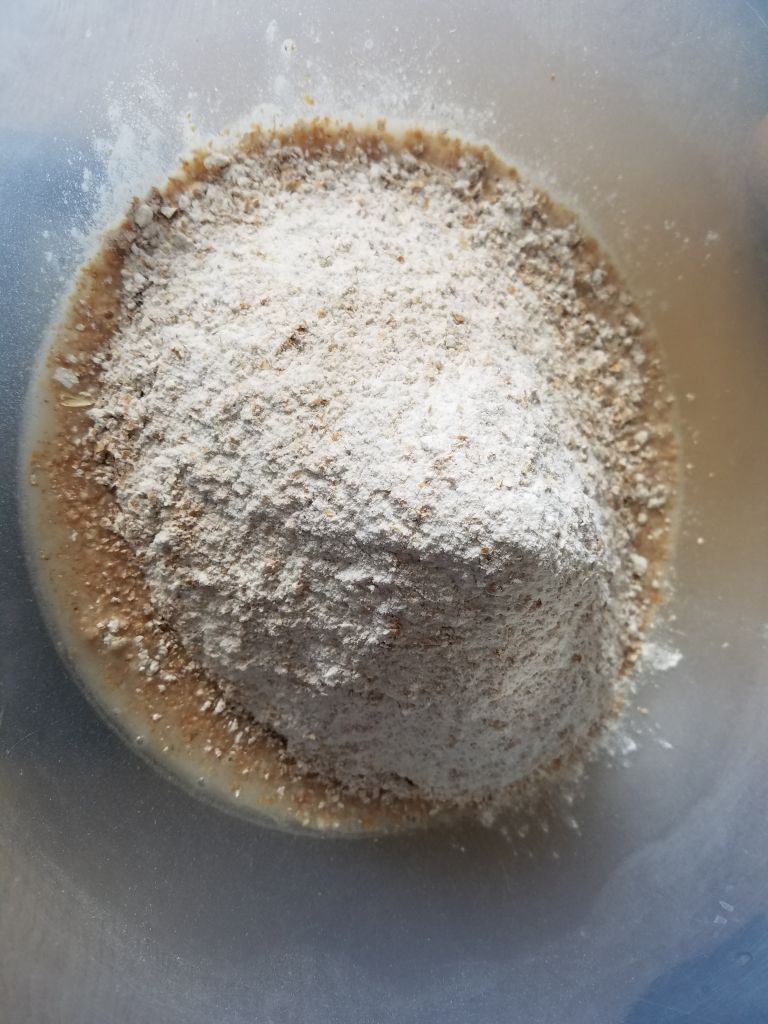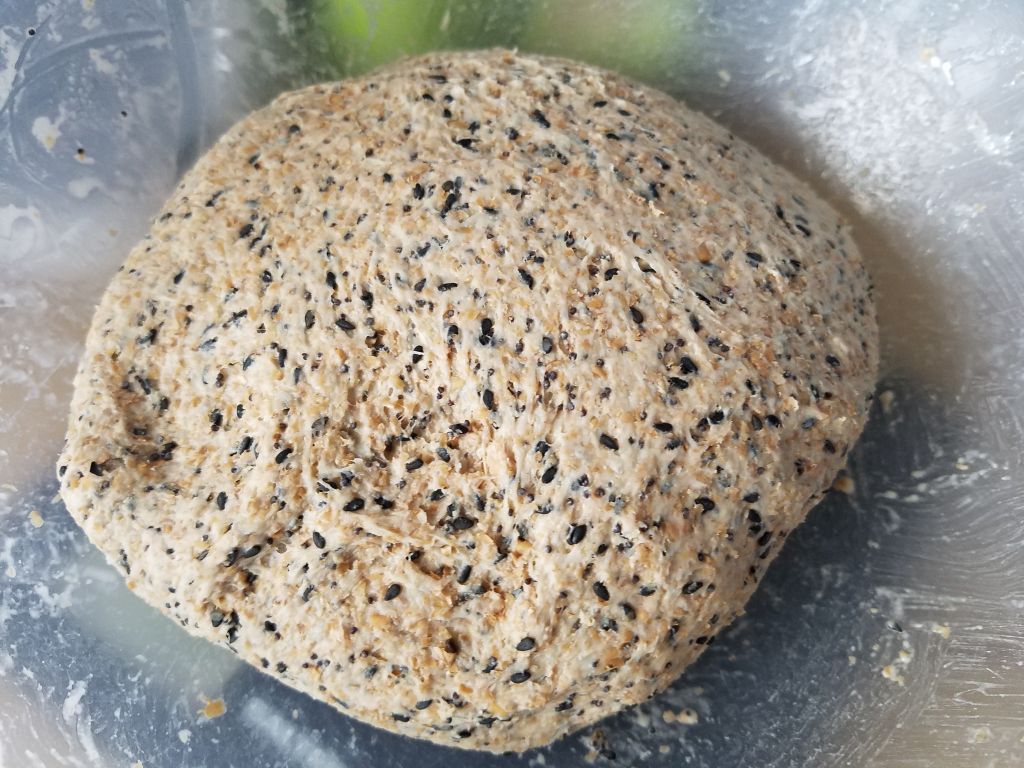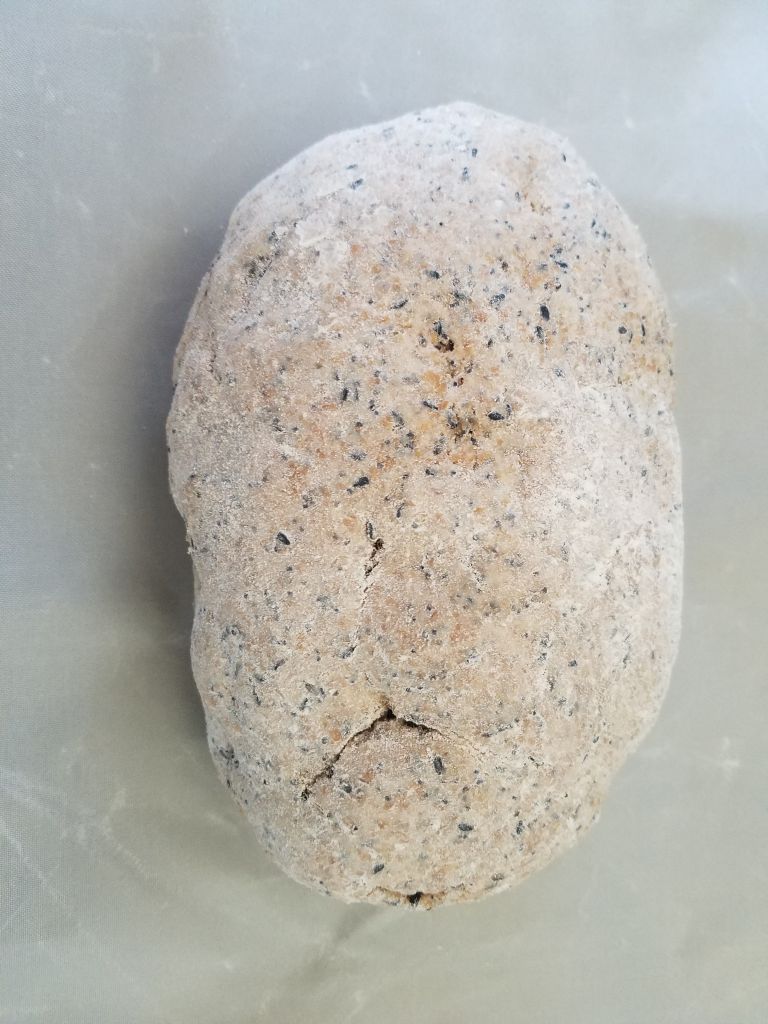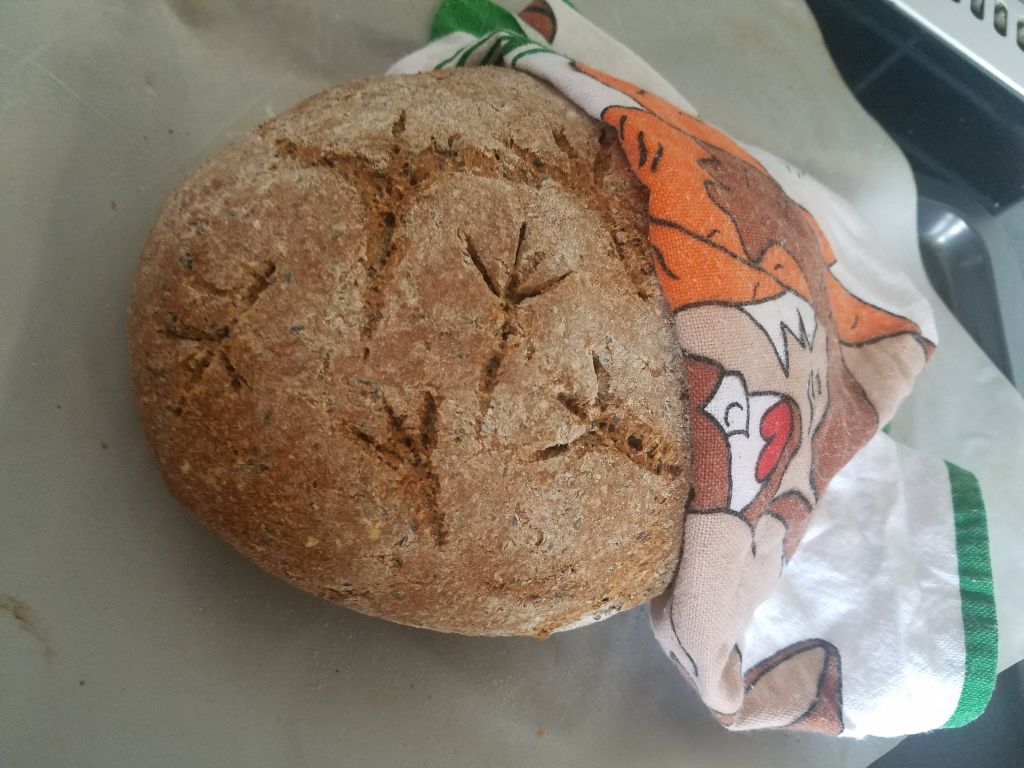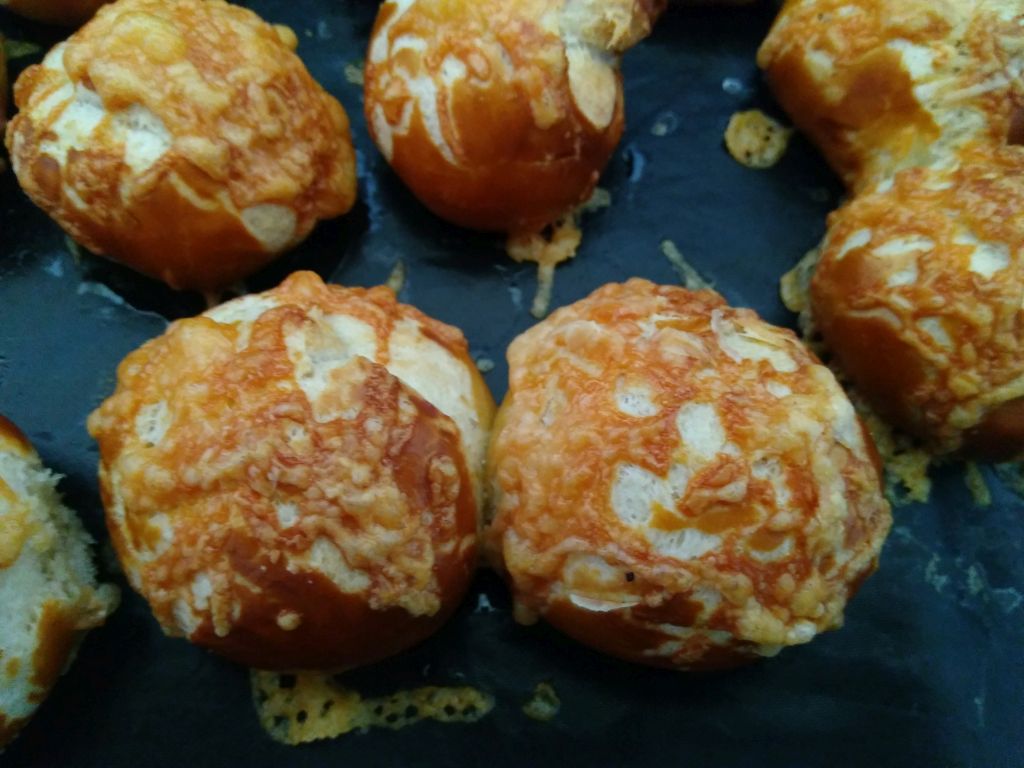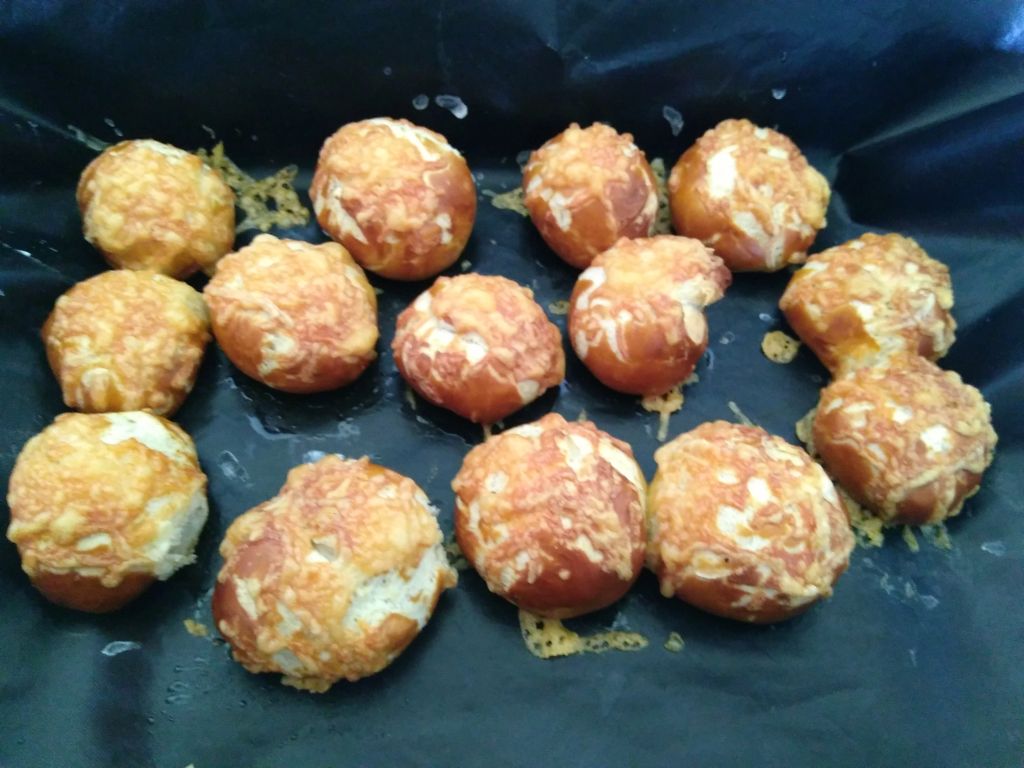This is a nice snack-type style bread that would also work along with a soup or a light dish. Made up of many small rolls that connect during rising and baking, it pulls apart into portions easily and is a great addition to the table at a dinner party.

Ingredients:
- 250 g flour (I used spelt wholemeal bread for a more rustic taste, but white flour will do fine)
- 4 g salt
- 4 g dried active yeast (or fresh yeast for 250 g flour)
- 170 ml water
- 150 g pesto
- cheese for topping
- Alternatively, 100 g each of water and flour can be replaced with 200 g sourdough starter discard

Preparation:
- knead flour, salt, yeast and water into a smooth dough
- rise for 30-60 minutes, until doubled in size
- form balls (I made 18 for extra-small snack-sized rolls)
- coat all balls in pesto
- put balls into lined baking tin or on baking tray
- cover and rise for 20-30 min
- sprinke with cheese
- bake at 200C (fan oven) for 20-25 minutes (a bit longer if making fewer, larger rolls)
Carbohydrates:
- total: 190 g
- around 10 g per bite-sized roll if making into 18, alternatively calculate from total

Preparation time:
- prep: 20 min
- rises: 60-90 min
- baking: approx. 20 min
- total: 2-2.5 hours


















































